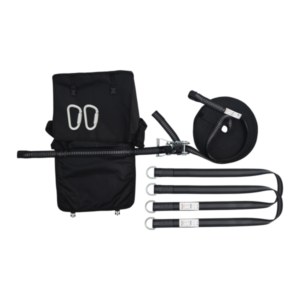Temporary Lifeline Solutions for the Philippines: Ensuring Workplace Safety
In the dynamic landscape of the Philippines’ industrial sectors, workplace safety remains a paramount concern. Ensuring the well-being of workers, particularly in environments prone to fall hazards, demands reliable solutions. Temporary lifeline systems emerge as crucial tools in this pursuit, offering effective measures to prevent accidents and adhere to stringent safety regulations.
Understanding Temporary Lifeline Systems
Temporary lifeline systems are essential safety mechanisms designed to protect workers engaged in tasks at elevated heights. Whether in construction, manufacturing, or maintenance, these systems provide secure attachment points that allow workers to move freely while minimizing the risk of falls. Common types include horizontal lifelines, ideal for situations requiring continuous protection along a designated path, and vertical lifelines, which offer reliable anchorage for individual workers.
Benefits of Temporary Lifeline Systems
The adoption of temporary lifeline systems yields significant benefits beyond mere compliance. Statistics underscore their role in reducing fall-related injuries and fatalities, making them indispensable in high-risk environments. By facilitating safe access to elevated work areas, these systems enhance productivity and operational efficiency while safeguarding workforce morale.
Key Features and Components
A typical temporary lifeline system comprises several critical components, including anchors, cables, and connectors. Each element plays a vital role in ensuring the system’s integrity and reliability under various environmental conditions. Quality materials and meticulous installation are paramount to guaranteeing optimal performance and longevity.
Applications of Temporary Lifeline Systems in the Philippines
Across the Philippines, industries embrace temporary lifeline systems to address unique challenges posed by local conditions and regulatory requirements. From bustling construction sites to intricate maintenance projects in industrial facilities, these systems prove indispensable. They not only mitigate risks associated with working at heights but also support compliance with local safety standards, aligning operations with global best practices.
Choosing the Right Temporary Lifeline System
Selecting an appropriate lifeline system involves careful consideration of specific operational needs and regulatory obligations. Factors such as environmental factors, work duration, and frequency of use play pivotal roles in determining the most suitable solution. Consulting with safety experts, such as those from 828 Cable System, ensures tailored recommendations that align with organizational objectives and enhance safety protocols.
Regulations and Compliance
In the Philippines, adherence to safety regulations, including those stipulated by OSHA and local authorities, is non-negotiable for businesses. Temporary Lifeline Solutions for the Philippines play a crucial role in achieving compliance, offering proactive measures against potential liabilities and ensuring a safe working environment. Failure to implement adequate fall protection measures can lead to severe consequences, underscoring the importance of proactive safety measures.
Takeaway
Temporary lifeline systems stand as indispensable assets in safeguarding workplace safety across the Philippines’ diverse industrial sectors. By investing in these solutions, businesses not only protect their most valuable assets—their employees—but also fortify operational resilience and regulatory compliance. As industries continue to evolve, prioritizing safety remains paramount, with temporary lifeline systems serving as pivotal tools in this ongoing commitment.

